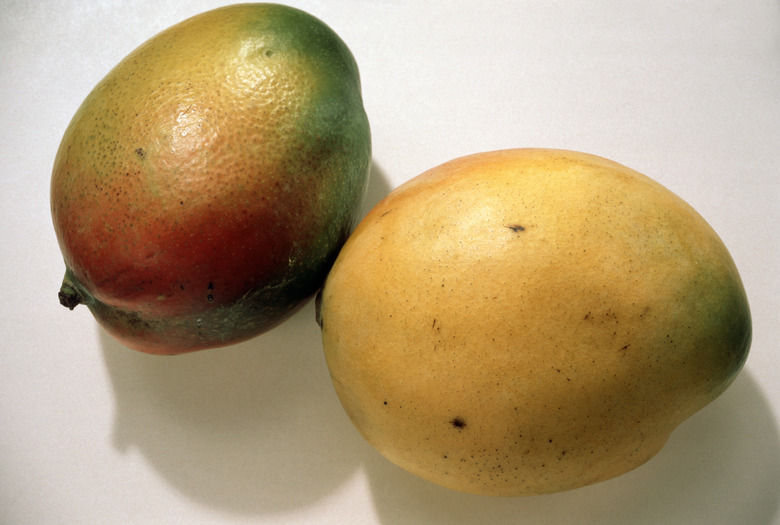How Long Do Mango Trees From Seedlings Bear Fruit?
Mango (Mangifera indica) trees can reward you with sweet, tropical fruits in just a few years after planting the seedlings. But to see many years of fruit bearing on your tree, the proper conditions must be present and diseases must be kept at bay. To start your own mango from a seed, you need to plant the right type of seed and live in a warm area like U.S. Department of Agriculture plant hardiness zones 10b through 11, where mangoes grow best.
Fruit-Bearing Climate
Fruit-Bearing Climate
The climate is important for flowering and fruit set. Dry, warm weather is ideal for getting mango trees to bear fruit. Once the flowers appear on the tree, temperatures below 40 degrees Fahrenheit may cause the flowers or any young fruit to fall off. Temperatures below 30 degrees may kill a young mango tree, but mature trees may die below 25 degrees. The best time for rain to occur for a mango tree is during the summer, with eight months of dry weather after that during which the fruit can set and grow with less risk of developing a fungal infection.
Seed Types
Seed Types
If growing mangoes from seeds, the type of seeds makes a difference. Mangoes with polyembryonic seeds, like "Florigon," "Saigon" and "Nam Doc Mai," can be grown successfully from seeds, but monoembryonic seeds, like those from "Keitt," "Sensation" and "Valencia Pride," are best grown only to produce rootstock because the fruit will not come true to the parents from the seeds. To grow these monoembryonic types of mangoes, you should graft them instead.
Initial Bearing
Initial Bearing
Once you plant polyembryonic seed, you need to wait up to four weeks for them to germinate in subtropical climates, but tropical conditions allow for seed germination in two weeks or less. After sprouting, you can expect your first mango harvest in the next three to six years. Mango trees grown from seedlings may take up to 15 years before they produce a full crop. If you used the seedlings as rootstock and grafted another variety to it during the second growing season, you can wait three to five years before harvesting your first crop. Once the flowers have set fruit, it may take 100 to 150 days before the fruit is ready for picking.
Alternate Bearing
Alternate Bearing
For the first 10 years of fruit bearing, you will likely get a crop of mangoes every year from your tree, but after 10 years, the tree will likely skip years and bear alternate years only. To prevent older mango trees from alternate bearing, you can prune them each year in the winter or early spring to encourage the tree to produce new growth, which will bear flowers and fruit that year. Another pruning method to prevent alternate bearing is to thin out flowers in years the tree produces a higher number of blooms than usual.
Tree Age
Tree Age
Mango trees live and produce fruit for many years, and with good growing conditions and without freezing weather that will kill the tree, mangoes can bear fruit for decades or longer. According to California Rare Fruit Growers Inc., there are mango trees reported to be bearing fruit that are older than 300 years.
References
- California Rare Fruit Growers Inc.: Mango
- University of Florida IFAS Extension: Mangifera Indica Mango
- Purdue University Horticulture: Fruits of Warm Climates Mango
- University of Florida IFAS Extension Service: Mango Growing in the Florida Home Landscape
- Texas A&M University: Fruit Fact Sheets Mango
